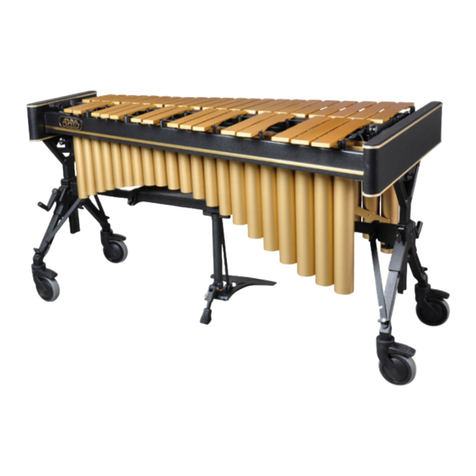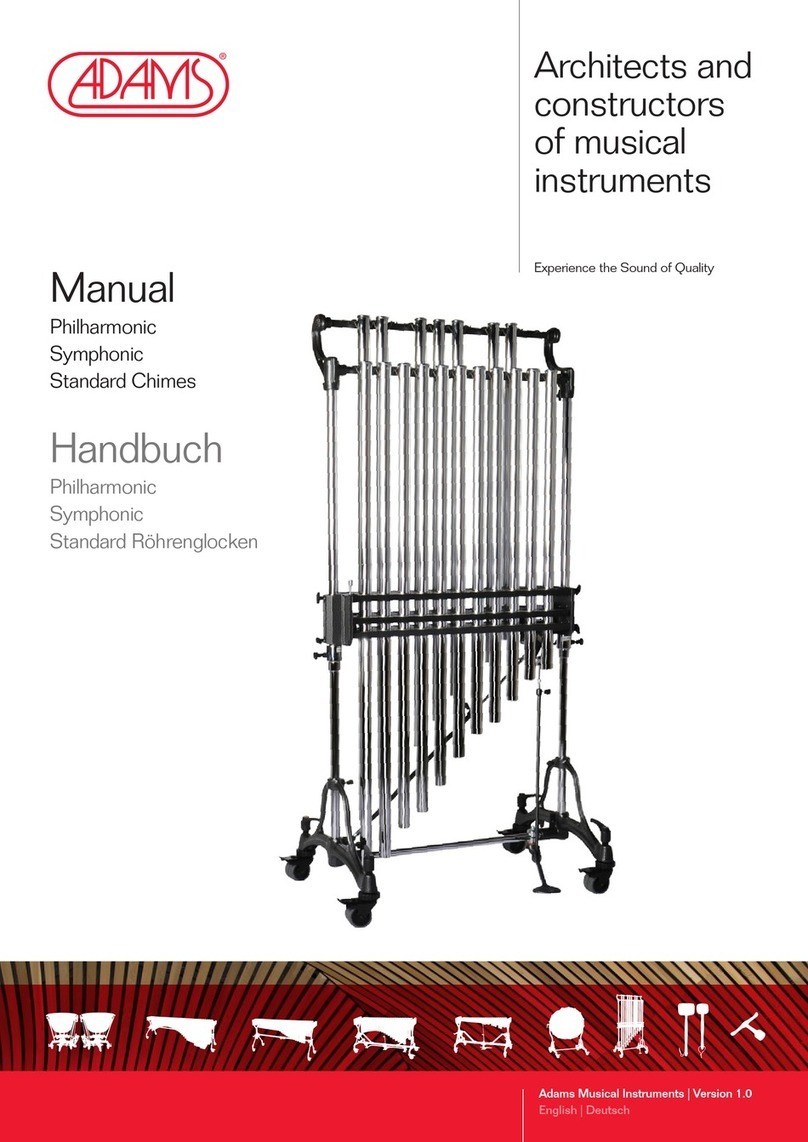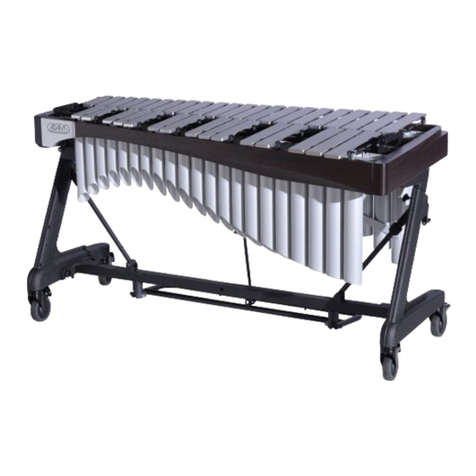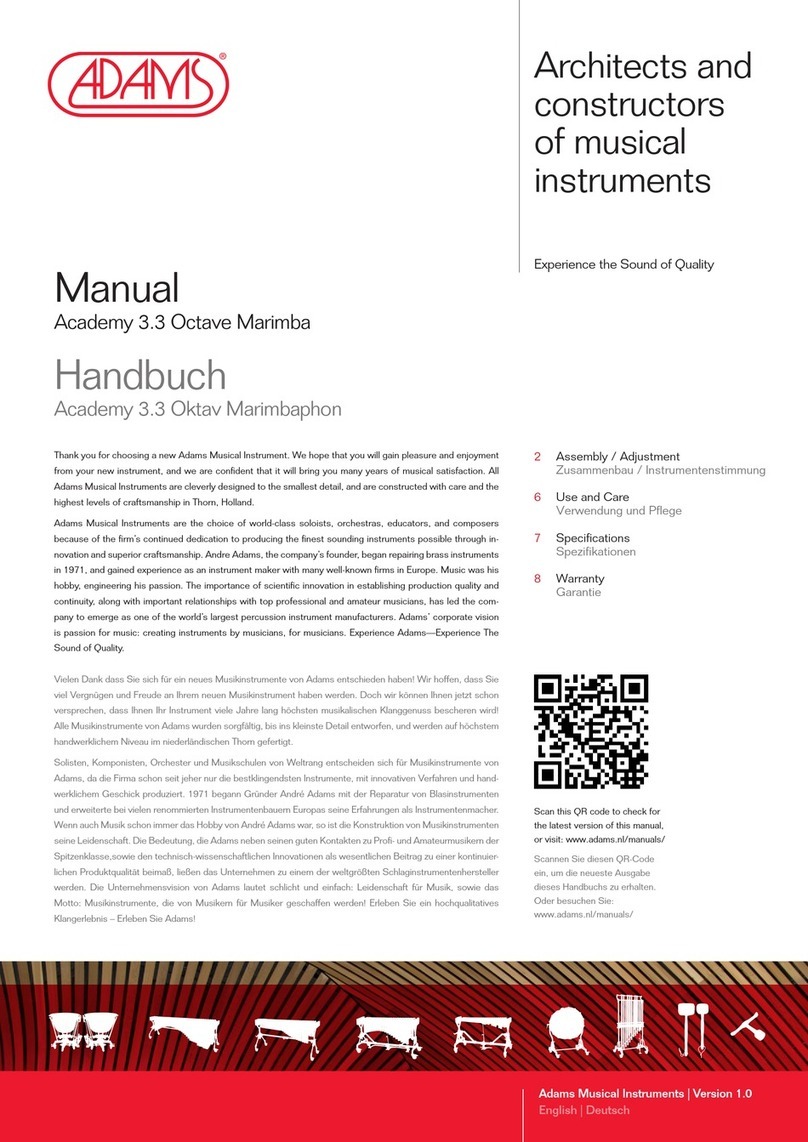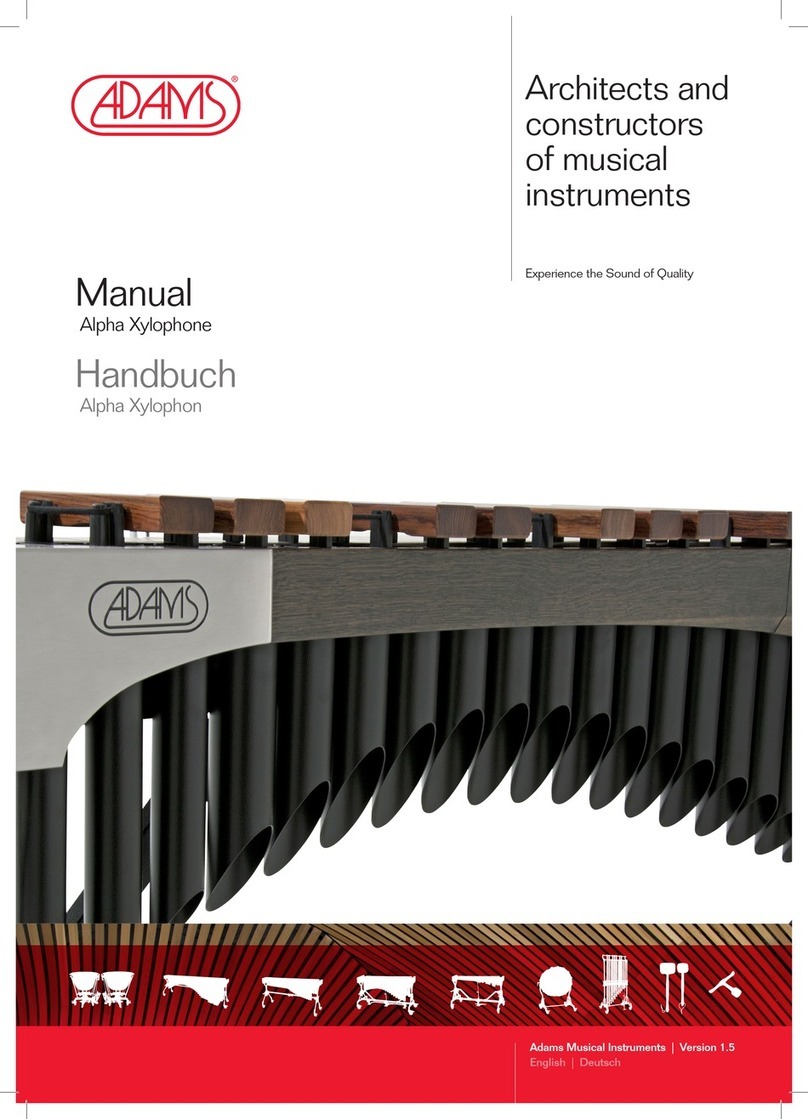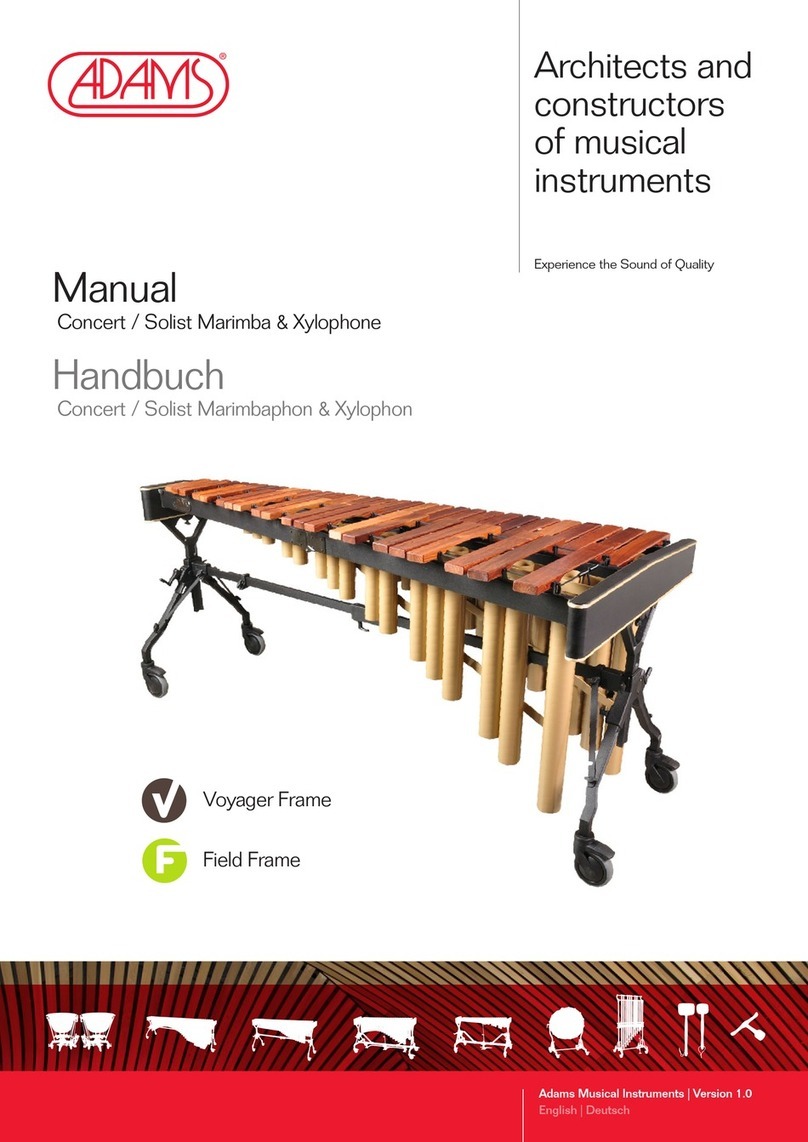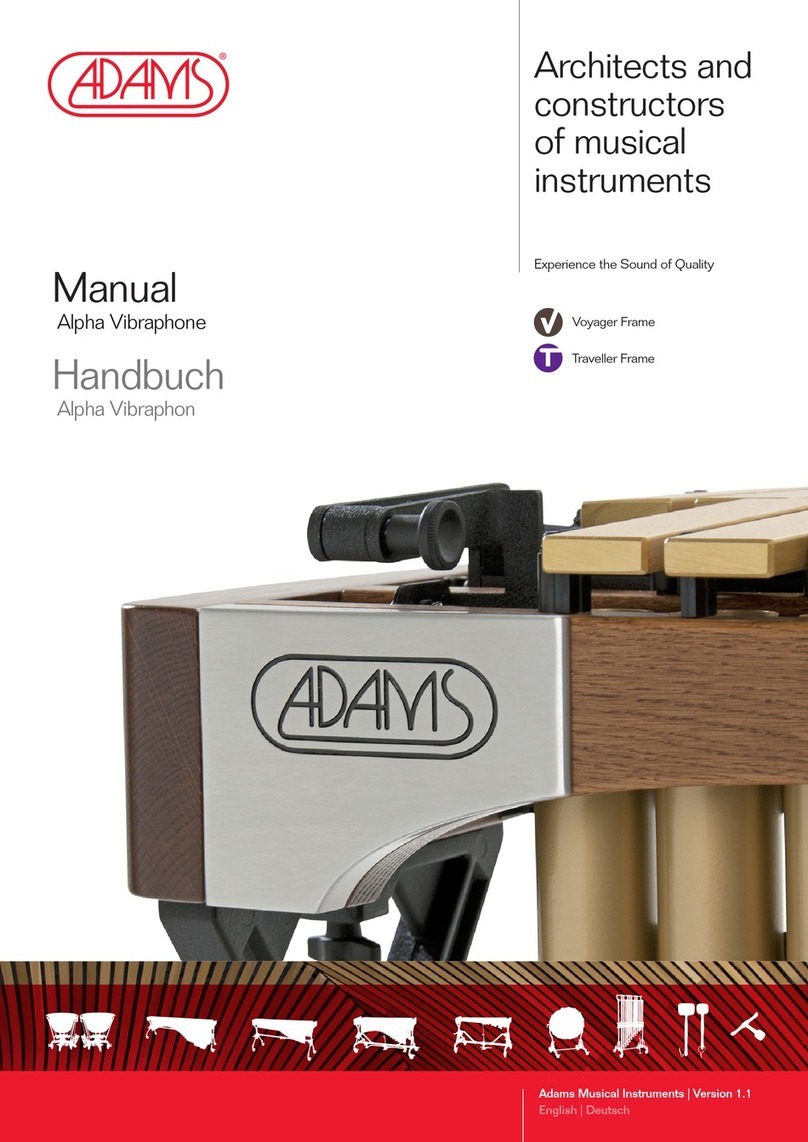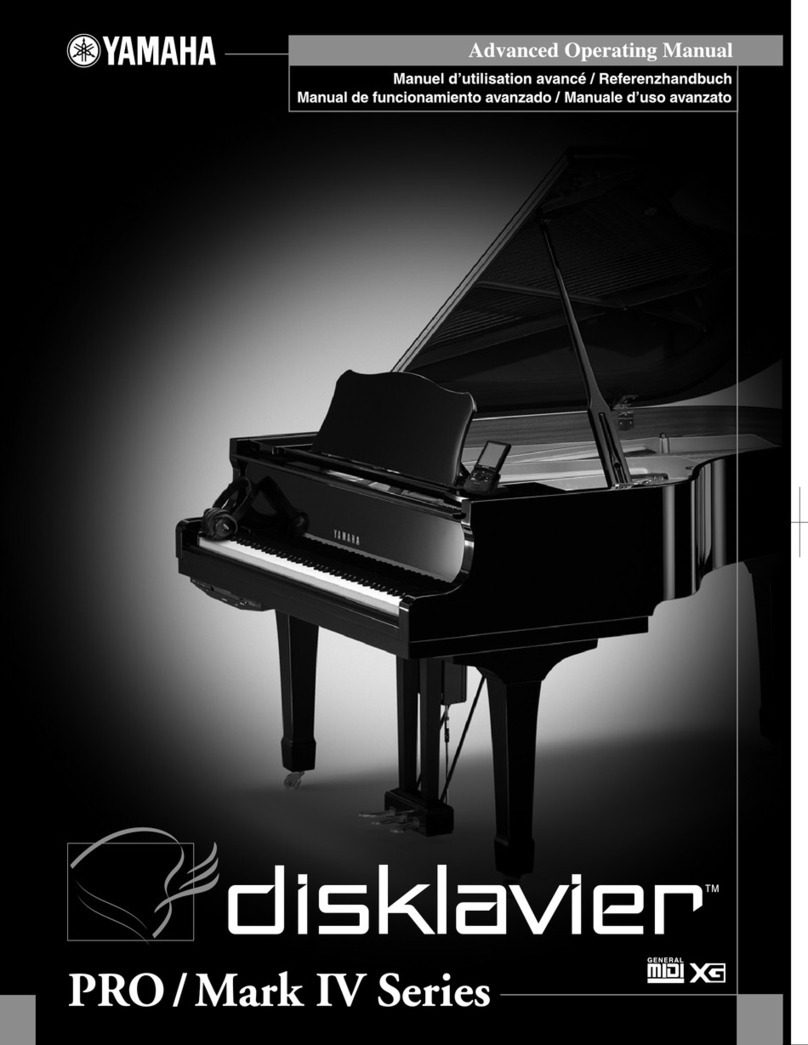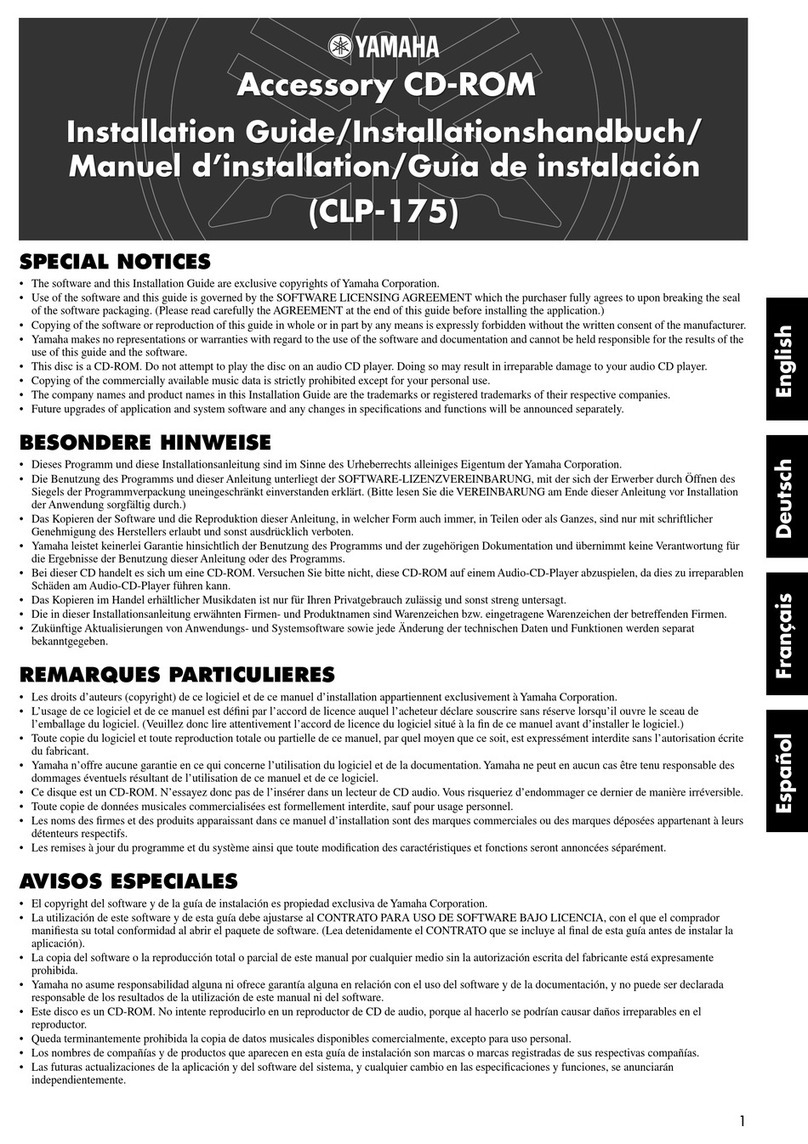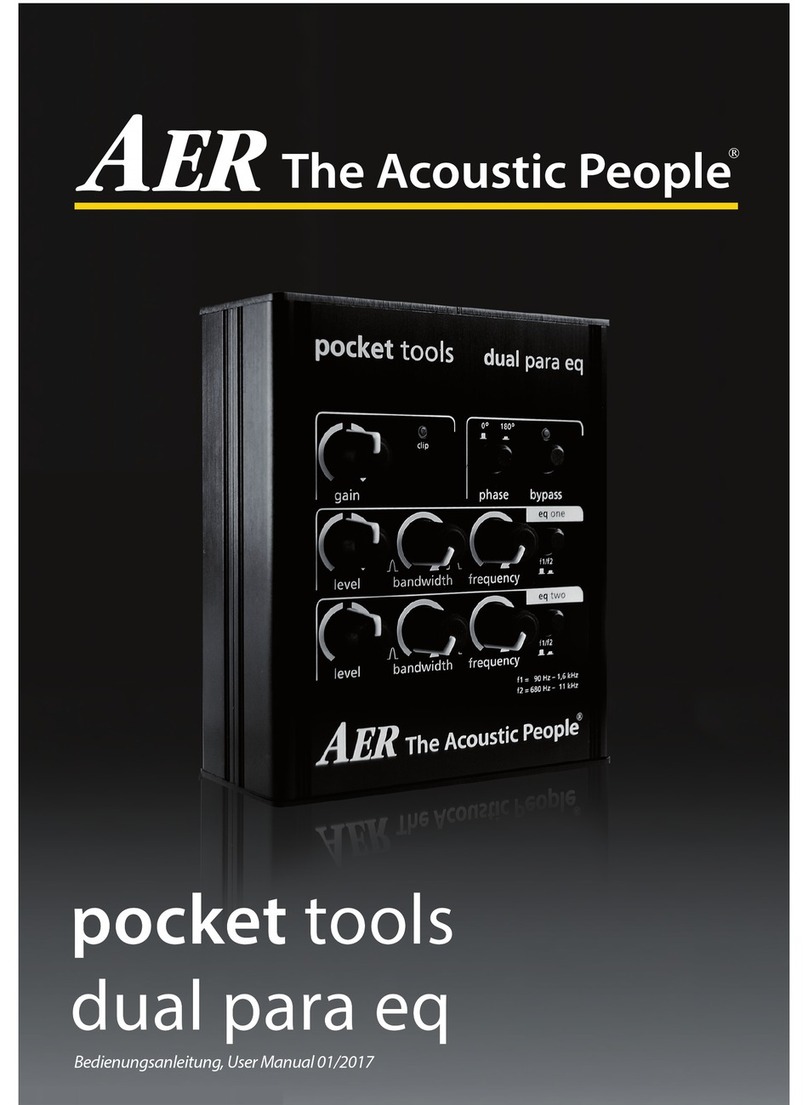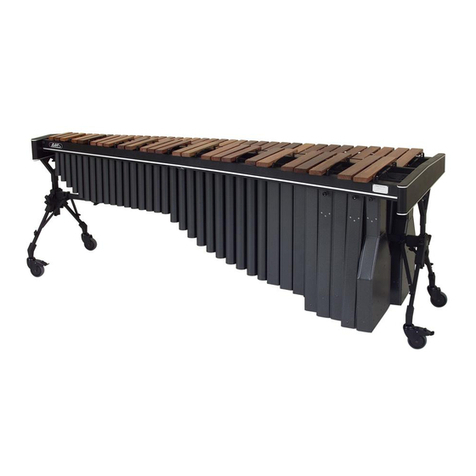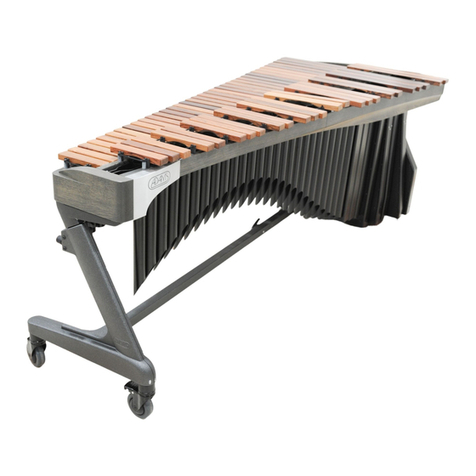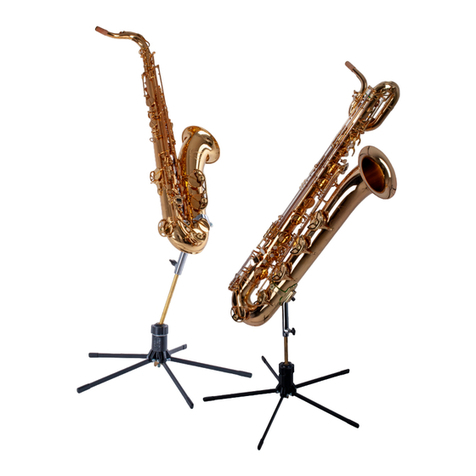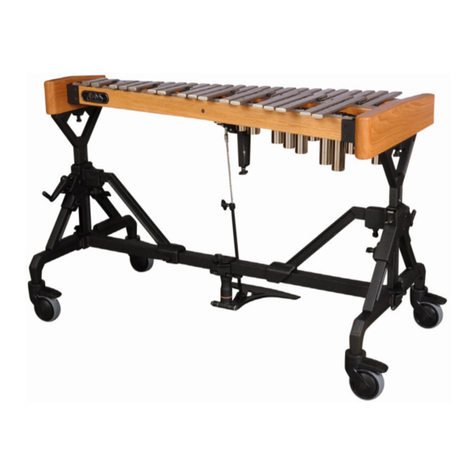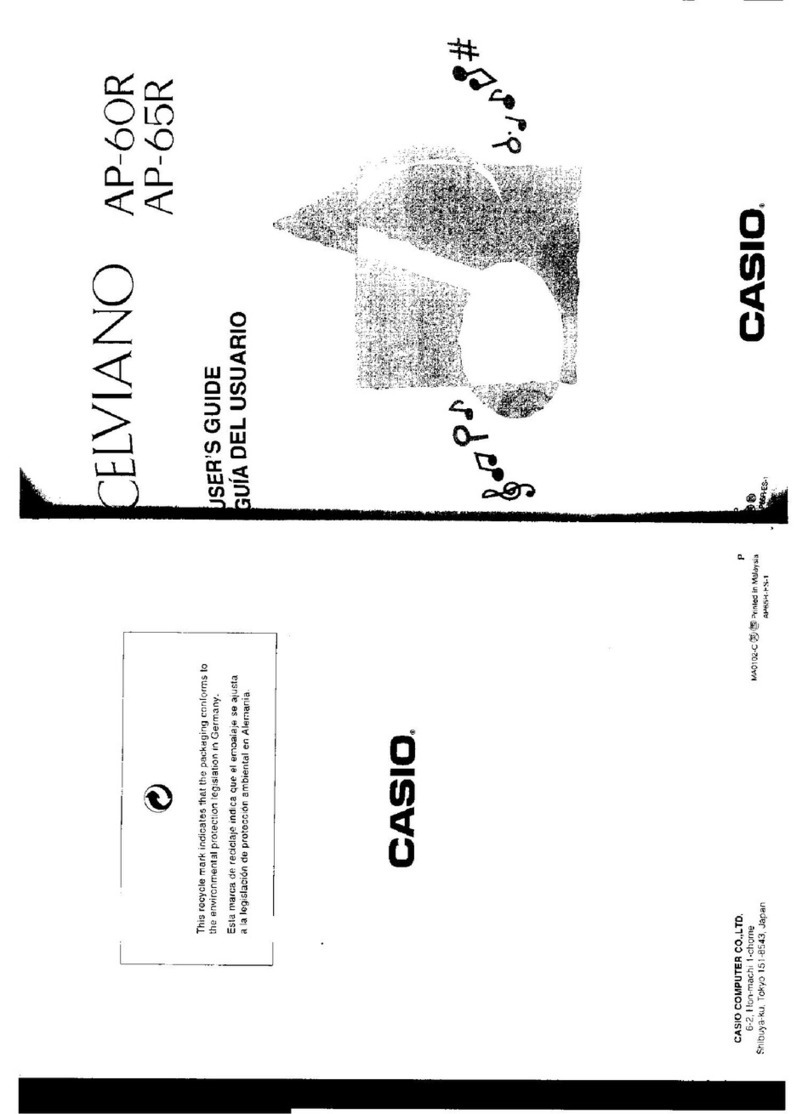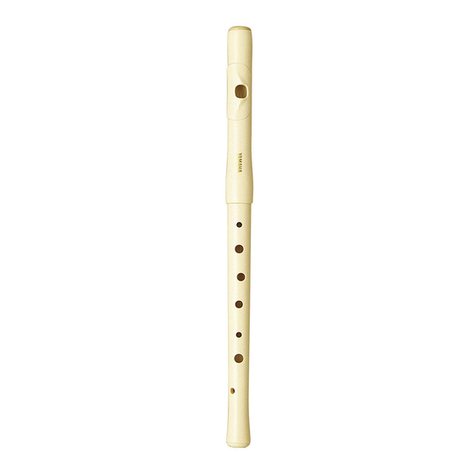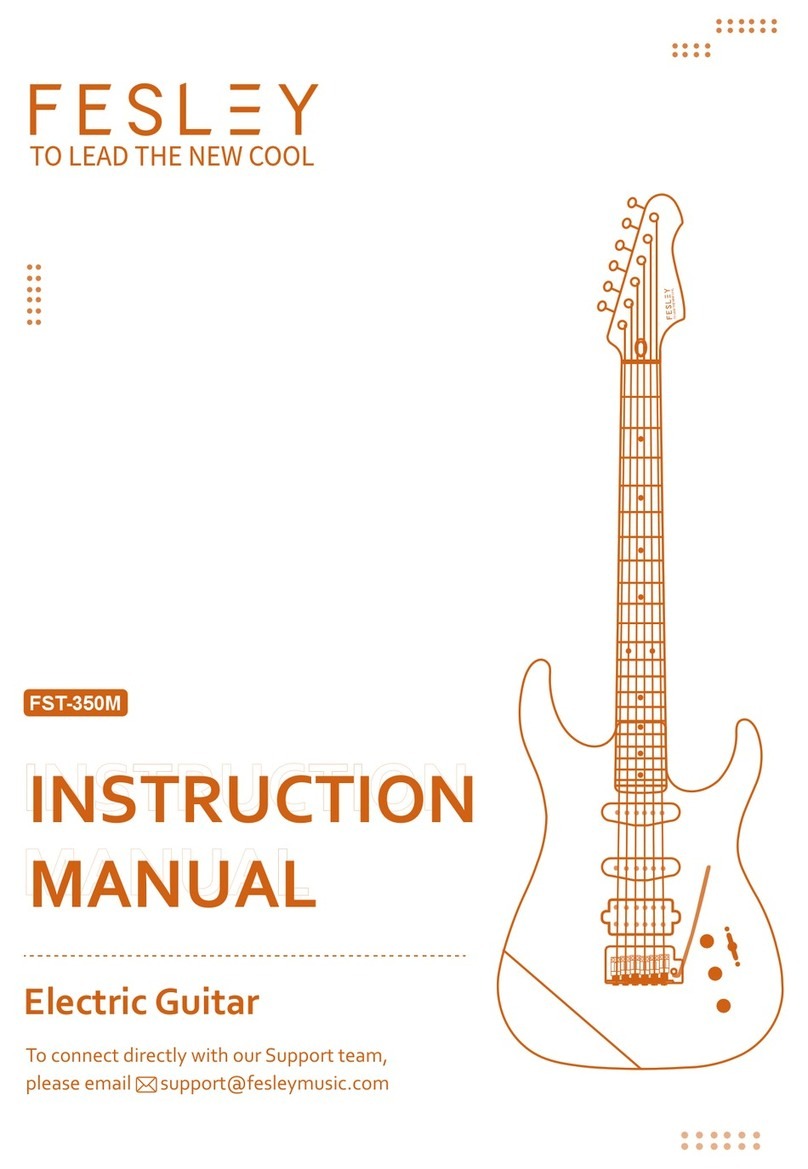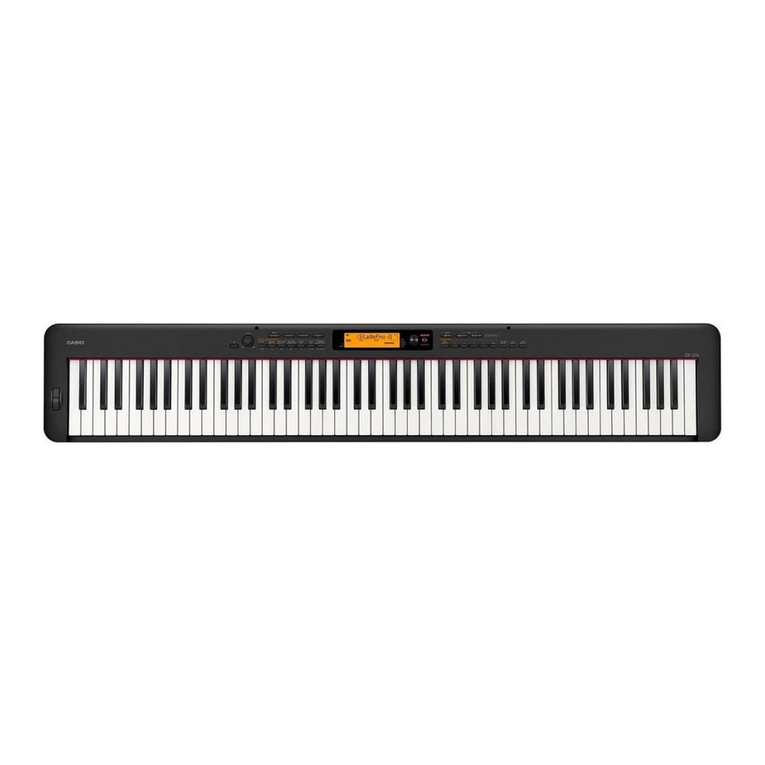Universal Timpani Manual www.adams-music.com
During normal use, all timpani require need minor adjustments to maintain correct working order.
As discussed in previous sections, the correct fundamental tone is the most important factor in maintaining excellent working order. Beacuse a head natually
stretches, regularly checking the fundamental tone and correcting as necessary is highly recommended. Almost all troubleshooting begins with correcting the
fundamental tone.
16
17
Troubleshooting
HEAD/PEDAL Refer to Pages
Symptom: The fundamental note gradually becomes lower over time.
Diagnosis: All heads stretch, slowly lowering the fundamental tone.
Action: First set the fundamental tone, then adjust the spring tension if necessary.
4-5
6-7
Symptom: The pedal does return to the lowest position when the clutch is released.
Diagnosis: Either the fundamental incorrect or the head needs to be changed.
Action: Check the fundamental tone, and then reevaluate the pedal performance. If this does not correct the problem, change the
head.
4-5
6-7
10-11
14-16
Symptom: The timpani does not achieve the correct scalar range.
Diagnosis: The fundamental must be corrected or the head needs to be replaced.
Action: Check the fundamental tone, and then reevaluate the pedal performance. If this does not correct the problem, change the
head.
4-5
Symptom: The quality of the tone produced has decreased.
Diagnosis: The head is played out: denting in the head is probably visible when the timpani is tuned to the lowest tone.
Action: Change the head.
14-16
Symptom:The head is not centered.
Diagnosis: The collar is uneven.
Action: Loosen tension in head, move collar, check tension mechanism in strut, and retune fundamental tone.
4-5
14-15
Symptom: There is noise coming from the head when the pedal is moved.
Diagnosis: The kettle bearing edge is not correctly lubricated.
Action: Remove the head, remove old lubrication, and apply new lubrication.
18
TUNING GAUGE Refer to Pages
Symptom: The tuning gauge indicator only moves a small distance.
Diagnosis: The tuning gauge connection rod position on the axel is incorrect.
Action: Adjust the position of the connection.
8-9
Symptom: The tuning gauge letters are not accurate.
Diagnosis: Either the tuning gauge letters need to be set or the fundamental tone has lowered.
Action: First correct the fundamental tone, then move the letters if necessary.
8-9
Symptom: The tuning gauge indicator does not move when the pedal moves.
Diagnosis: Either the indicator or the connection rod is loose.
Action: Find the loose connection and tighten as necessary.
8-9
FINE TUNER Refer to Pages
Symptom: The pedal resistance is either very high or very low.
Diagnosis: The fine tuner is at an extreme in its mechanical range.
Action: Move fine tuner to middle of mechanical range and retune fundamental with tension rods.
10-11
Symptom: The fine tuner is not responsive.
Diagnosis: The fine tuner is at an extreme of its mechanical range.
Action: Move fine tuner to middle of mechanical range and retune fundamental with tension rods.
10-11




















